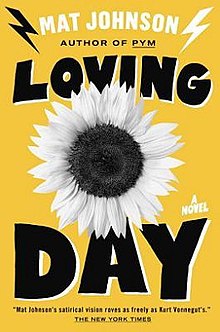
Melungeons are a group of people from Appalachia who predominantly descend from Northern or Central European women and sub-Saharan African men. Their ancestors were likely brought to Virginia as indentured servants in the mid-17th century.
Loving v. Virginia, 388 U.S. 1 (1967), was a landmark civil rights decision of the U.S. Supreme Court in which the Court ruled that laws banning interracial marriage violate the Equal Protection and Due Process Clauses of the Fourteenth Amendment to the U.S. Constitution. The case involved Mildred Loving, a woman of color, and white man Richard Loving. In 1958, they were sentenced to a year in prison for marrying each other. Their marriage violated Virginia's Racial Integrity Act of 1924, which criminalized marriage between people classified as "white" and people classified as "colored". The Lovings appealed their conviction to the Supreme Court of Virginia, which upheld it. They then appealed to the U.S. Supreme Court, which agreed to hear their case.
The one-drop rule was a legal principle of racial classification that was prominent in the 20th-century United States. It asserted that any person with even one ancestor of black ancestry is considered black. It is an example of hypodescent, the automatic assignment of children of a mixed union between different socioeconomic or ethnic groups to the group with the lower status, regardless of proportion of ancestry in different groups.

Jessie Redmon Fauset was an editor, poet, essayist, novelist, and educator. Her literary work helped sculpt African-American literature in the 1920s as she focused on portraying a true image of African-American life and history. Her black fictional characters were working professionals which was an inconceivable concept to American society during this time Her story lines related to themes of racial discrimination, "passing", and feminism.

Island in the Sun is a 1957 drama film produced by Darryl F. Zanuck and directed by Robert Rossen. It features an ensemble cast including James Mason, Harry Belafonte, Joan Fontaine, Joan Collins, Dorothy Dandridge, Michael Rennie, Stephen Boyd, Patricia Owens, John Justin, Diana Wynyard, John Williams, and Basil Sydney. The film is about race relations and interracial romance set in the fictitious island of Santa Marta. Barbados and Grenada were selected as the sites for the movie based on the 1955 novel by Alec Waugh. The film was controversial at the time of its release for its on-screen portrayal of interracial romance.

John Alfred Williams was an African American author, journalist, and academic. His novel The Man Who Cried I Am was a bestseller in 1967. Also a poet, he won an American Book Award for his 1998 collection Safari West.
Loving Day is an annual national celebration held on June 12, the anniversary of the 1967 United States Supreme Court decision Loving v. Virginia which struck down all anti-miscegenation laws remaining in sixteen U.S. states. In the United States, anti-miscegenation laws were U.S. state laws banning interracial marriage, mainly forbidding marriage between two different races, until the Warren Court ruled unanimously in 1967 that these state laws were unconstitutional. Chief Justice Earl Warren wrote in the court majority opinion that "the freedom to marry, or not marry, a person of another race resides with the individual, and cannot be infringed by the State."
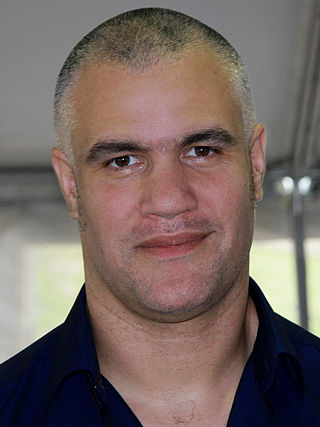
Mat Johnson is an American fiction writer who works in both prose and the comics format. In 2007, he was named the first USA James Baldwin Fellow by United States Artists.
Racial passing occurs when a person who is classified as a member of a racial group is accepted or perceived ("passes") as a member of another racial group. Historically, the term has been used primarily in the United States to describe a black or brown person or of multiracial ancestry who assimilated into the white majority to escape the legal and social conventions of racial segregation and discrimination.
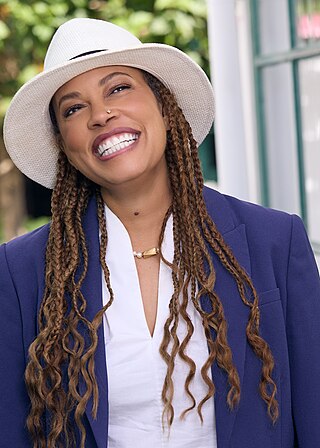
France Winddance Twine is a Black and Native American sociologist, ethnographer, visual artist, and documentary filmmaker. Twine has conducted field research in Brazil, the UK, and the United States on race, racism, and anti-racism. She has published 11 books and more than 100 articles, review essays, and books on these topics.

Mildred Delores Loving and Richard Perry Loving were an American married couple who were the plaintiffs in the landmark U.S. Supreme Court case Loving v. Virginia (1967). Their marriage has been the subject of three movies, including the 2016 drama Loving, and several songs. The Lovings were criminally charged with interracial marriage under a Virginia statute banning such marriages, and were forced to leave the state to avoid being jailed. They moved to Washington, D.C., but wanted to return to their home town. With the help of the American Civil Liberties Union (ACLU), they filed suit to overturn the law. In 1967, the Supreme Court ruled in their favor, striking down the Virginia statute and all state anti-miscegenation laws as unconstitutional, for violating due process and equal protection of the law under the Fourteenth Amendment. On June 29, 1975, a drunk driver struck the Lovings' car in Caroline County, Virginia. Richard was killed in the crash, at the age of 41. Mildred lost her right eye.
Fran Ross was an American writer best known for her 1974 novel Oreo. She briefly wrote comedy for Richard Pryor.
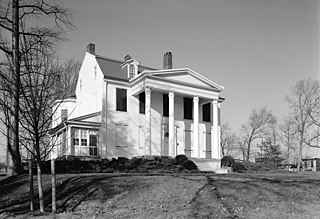
The Loudoun Mansion is an historic, American house that is located in the Germantown neighborhood of Philadelphia, Pennsylvania.
Multiracial Americans or mixed-race Americans are Americans who have mixed ancestry of two or more races. The term may also include Americans of mixed-race ancestry who self-identify with just one group culturally and socially. In the 2010 United States census, roughly 9 million individuals or 3.2% of the population, self-identified as multiracial. There is evidence that an accounting by genetic ancestry would produce a higher number.
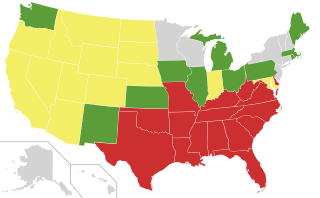
Interracial marriage has been legal throughout the United States since at least the 1967 U.S. Supreme Court decision Loving v. Virginia (1967) that held that anti-miscegenation laws were unconstitutional via the 14th Amendment adopted in 1868. Chief Justice Earl Warren wrote in the court opinion that "the freedom to marry, or not marry, a person of another race resides with the individual, and cannot be infringed by the State." Interracial marriages have been formally protected by federal statute through the Respect for Marriage Act since 2022.

Incognegro is a black-and-white graphic novel written by Mat Johnson with art by Warren Pleece. It was published by DC Comics imprint Vertigo.

In the United States, anti-miscegenation laws were passed by most states to prohibit interracial marriage, and in some cases also prohibit interracial sexual relations. Some such laws predate the establishment of the United States, some dating to the later 17th or early 18th century, a century or more after the complete racialization of slavery. Nine states never enacted such laws; 25 states had repealed their laws by 1967, when the United States Supreme Court ruled in Loving v. Virginia that such laws were unconstitutional in the remaining 16 states. The term miscegenation was first used in 1863, during the American Civil War, by journalists to discredit the abolitionist movement by stirring up debate over the prospect of interracial marriage after the abolition of slavery.
Lise Kristin Funderburg is an American writer and editor. She is the author of Pig Candy: Taking My Father South, Taking My Father Home, and Black, White, Other: Biracial Americans Talk about Race and Identity. One of the first books to explore the lives of adult children of black-white unions, Black, White, Other is a core text in the study of American multiracial identity.
Sally Brant was a white indentured servant in the household of Elizabeth Sandwith Drinker and Henry Drinker in Philadelphia. She gave birth out of wedlock to a child of mixed race, in defiance of legal restrictions on the sexual activity of indentured servants and strong social prejudice against interracial relationships.

In the past, leaders of the Church of Jesus Christ of Latter-day Saints have consistently opposed marriages between members of different ethnicities, though interracial marriage is no longer considered a sin. In 1977, apostle Boyd K. Packer publicly stated that "[w]e've always counseled in the Church for our Mexican members to marry Mexicans, our Japanese members to marry Japanese, our Caucasians to marry Caucasians, our Polynesian members to marry Polynesians. ... The counsel has been wise." Nearly every decade for over a century—beginning with the church's formation in the 1830s until the 1970s—has seen some denunciations of interracial marriages (miscegenation), with most statements focusing on Black–White marriages. Church president Brigham Young taught on multiple occasions that Black–White marriage merited death for the couple and their children.
